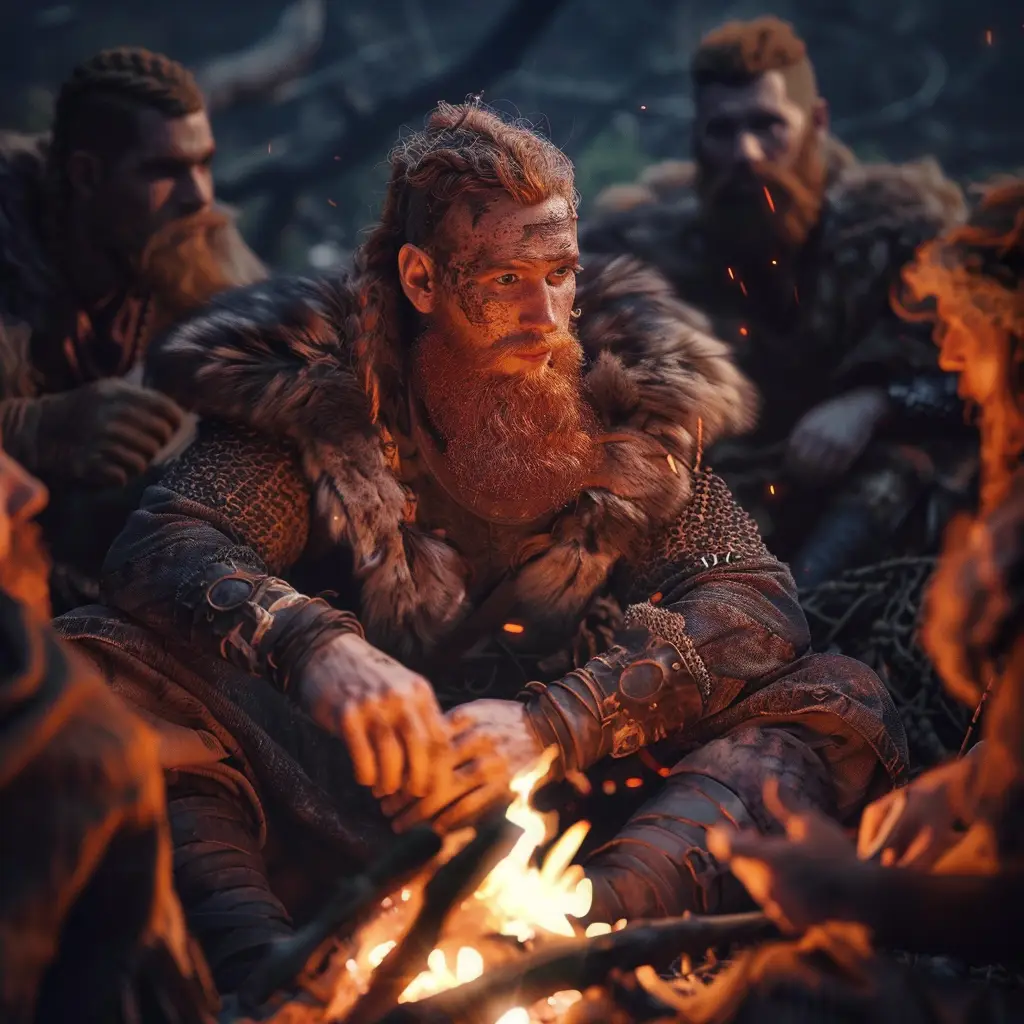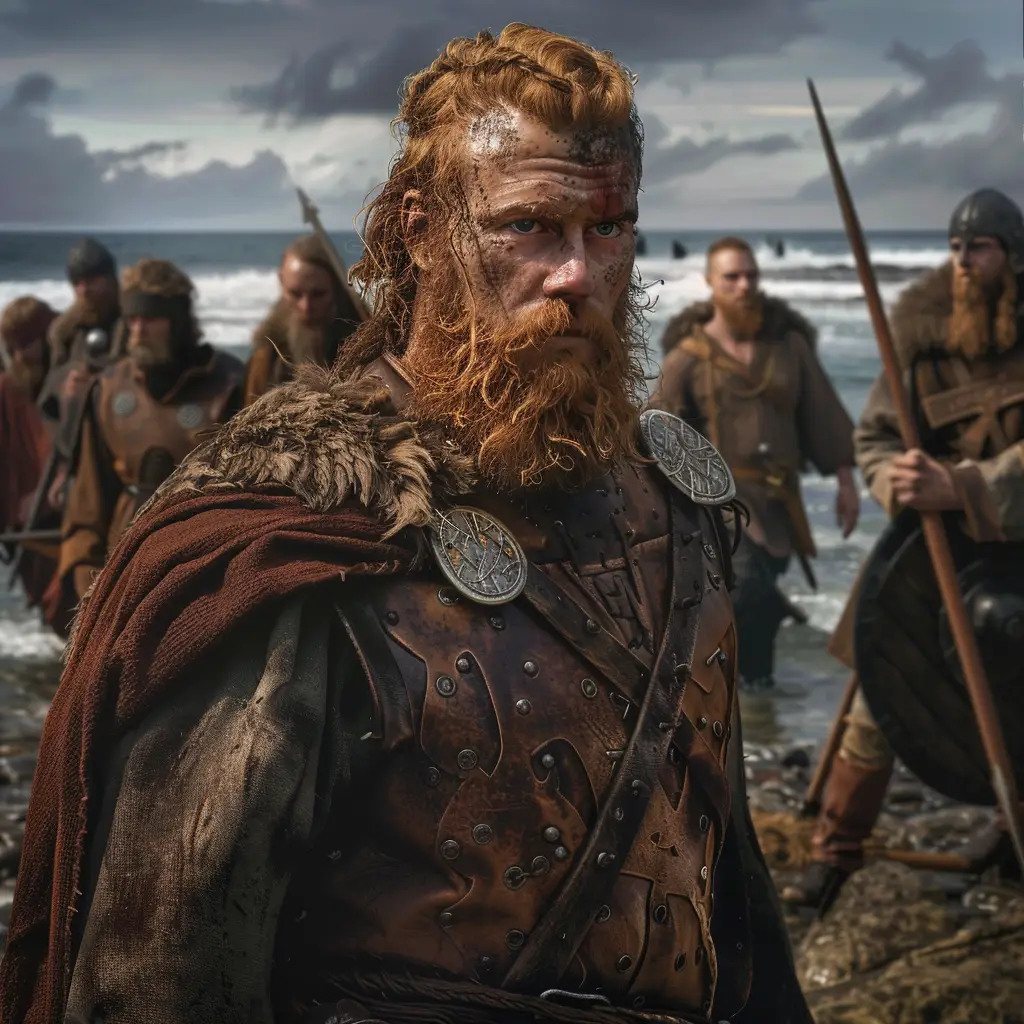Erik the Red, born Erik Thorvaldsson around 950 AD in Norway, was a famous Norse explorer known for founding the first Norse settlements in Greenland. He earned his nickname “Erik the Red” because of his red hair and possibly his fiery temper. Erik moved to Iceland with his family after his father was exiled from Norway for manslaughter. Following in his father’s footsteps, Erik was later exiled from Iceland due to his involvement in some killings.
During his exile, Erik set sail westward and discovered Greenland around 982 AD. He spent a few years exploring and mapping the coastline before returning to Iceland to recruit settlers. His glowing descriptions of the new land, calling it “Greenland” to make it sound more appealing, led many to join him. Around 985 AD, Erik led a fleet of 25 ships, of which only 14 successfully made it to Greenland, and established two main settlements: the Eastern Settlement and the Western Settlement.
Erik the Red’s legacy continued through his son, Leif Erikson, who is credited with being one of the first Europeans to reach North America, landing in what he called Vinland, around the year 1000 AD. Erik’s adventurous spirit and pioneering efforts had a significant impact on the Norse exploration of the North Atlantic.
Erik the Red is best known for several key exploits that have cemented his place in history:
Founding Greenland’s First Norse Settlements: After being exiled from Iceland around 982 AD for manslaughter, Erik sailed westward and discovered Greenland. He spent a few years exploring and mapping the island’s coastline. Upon his return to Iceland, he described Greenland in glowing terms to attract settlers, emphasizing the green and fertile land despite its harsh conditions. Around 985 AD, he led a fleet of 25 ships to Greenland, of which only 14 successfully made the journey, and established the Eastern and Western Settlements, the first Norse colonies in Greenland.
Exile from Iceland: Erik’s journey to Greenland was precipitated by his exile from Iceland. He was involved in several violent disputes, resulting in his temporary banishment. His exile led to his exploration and eventual settlement of Greenland.
Survival and Leadership: Erik demonstrated remarkable leadership and survival skills by successfully establishing and maintaining settlements in the harsh and unforgiving environment of Greenland. His ability to lead a group of settlers, ensure their survival, and establish a thriving community is a testament to his leadership qualities and resilience.
Influence on Exploration: Erik’s adventurous spirit and discoveries had a profound influence on subsequent Norse exploration. His son, Leif Erikson, inspired by Erik’s voyages, went on to explore parts of North America, becoming one of the first Europeans to set foot on the continent.
Erik the Red’s exploits are documented in the Icelandic sagas, particularly the “Saga of Erik the Red” and the “Saga of the Greenlanders,” which provide detailed accounts of his life and adventures.
Erik the Red was known for his distinctive red hair, which earned him his famous nickname. Historical descriptions and sagas don’t provide extensive details about his physical appearance beyond his red hair. However, as a Viking chieftain and explorer, he was likely to have been robust and physically fit, given the demanding nature of his voyages and the rugged lifestyle of the Norse people at that time. He probably had a weathered and sturdy appearance, typical of someone who spent much of their life in harsh, outdoor conditions.
While we can’t know specifics about his facial features or height, he is often imagined as a fierce Viking with a strong build, perhaps a beard, and an imposing presence.
Erik the Red was married. His wife’s name was Þjodhild (Thjodhild in anglicized form). Together, they had four children: three sons—Leif Erikson, Thorvald Erikson, and Thorstein Erikson and a daughter named Freydís Eiríksdóttir. Þjodhild is also noted for having converted to Christianity later in life, which was significant because it influenced her son Leif Erikson’s own conversion and subsequent efforts to spread Christianity in Greenland.
Erik’s Children
Leif Erikson: Perhaps the most famous of Erik’s children, Leif is credited with being one of the first Europeans to reach North America, specifically an area he called Vinland, around the year 1000 AD.
Thorvald Erikson: He followed in his brother Leif’s footsteps and also explored parts of North America. Unfortunately, Thorvald was killed in a skirmish with indigenous people during one of his expeditions.
Thorstein Erikson: He attempted to reach Vinland but did not have much success. Thorstein’s voyages were plagued by difficulties, and he eventually died in Greenland.
Freydís Eiríksdóttir: She also traveled to Vinland and is remembered for her strong and, at times, ruthless character. According to some sagas, Freydís displayed remarkable courage and ferocity in confrontations with indigenous people. Her actions and legacy are somewhat controversial, with varying accounts depicting her in different lights.



